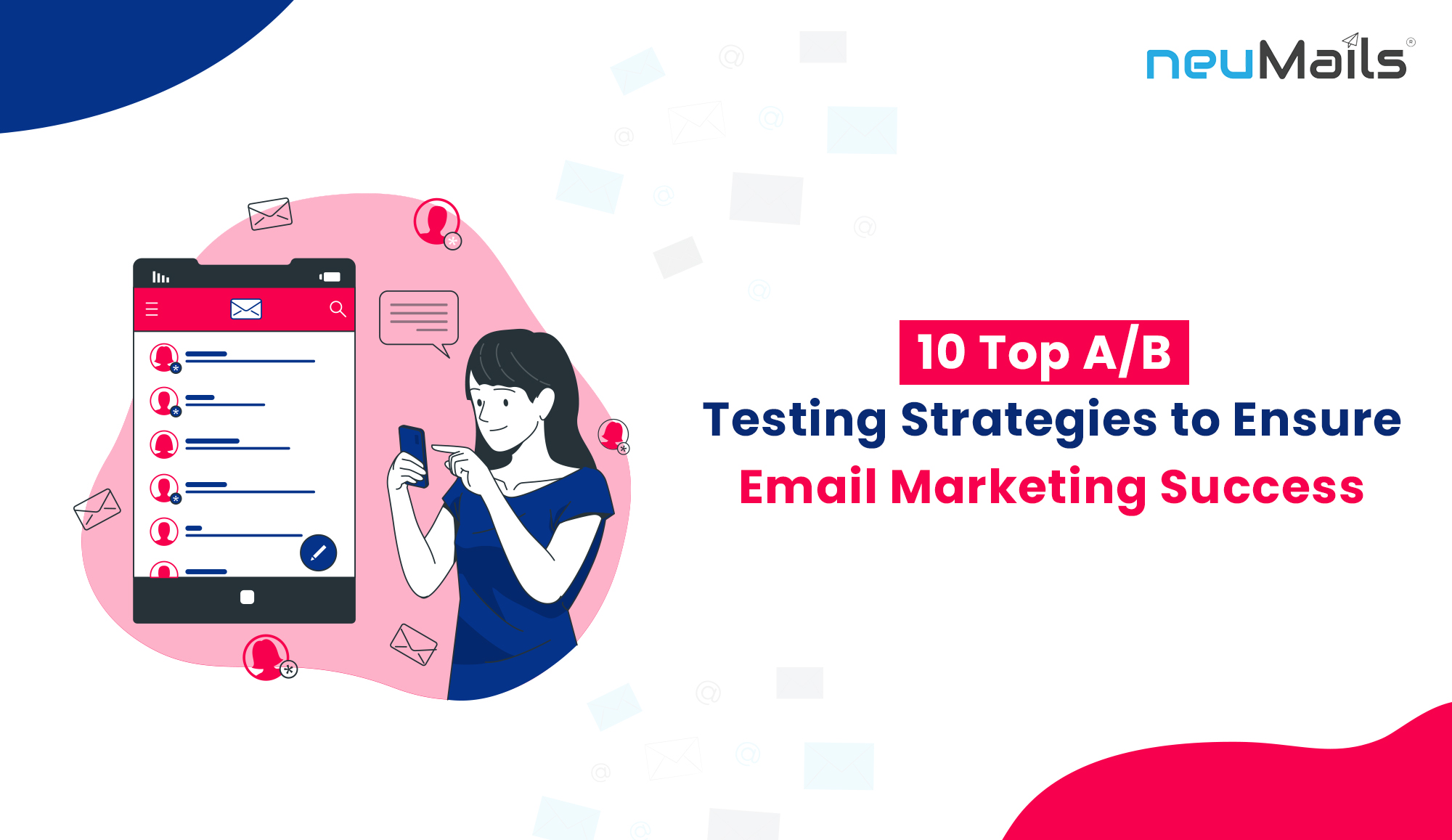In the fast-paced world of email marketing, the ability to adapt and optimize your campaigns is crucial for success. A/B testing, also known as split testing, is a powerful technique that allows you to compare different versions of your emails and determine which one resonates best with your audience. By experimenting with various elements of your emails, you can refine your approach and boost engagement, conversions, and ultimately, the success of your email marketing campaigns.
TABLE OF CONTENTS
- Subject Line Testing
Your email’s subject line is the first thing recipients see, so it’s essential to make a strong first impression. Check out various subject lines to see which ones produce the highest open rates. Experiment with length, tone, personalization, and emojis to discover what resonates best with your audience.
- Sender Name and Address
The sender’s name and email address play a significant role in whether an email gets opened or ignored. Test variations of sender information, such as using a personal name versus a brand name, to determine which approach builds trust and credibility with your subscribers.
- Email Content and Copy
Experiment with the content and copy of your emails to find the right messaging that drives action. Test different headlines, body text, and calls to action (CTAs) to identify the language and style that resonates most with your audience.
- Email Design and Layout
Visual elements, such as email design, images, and layout, can significantly impact engagement. Test different email templates, images, and button styles to discover which design elements lead to higher click-through rates (CTRs) and conversions.
- CTA Buttons
The color, size, text, and placement of your CTA buttons can influence conversion rates. A/B tests various combinations to determine the most effective way to encourage subscribers to take the desired action.
- Timing and Send Frequency
Finding the optimal time to send your emails can boost open rates. Test different send times and days of the week to identify when your audience is most active and responsive. Additionally, experiment with email frequency to strike the right balance between engagement and avoiding email fatigue.
- Personalization
Personalization can significantly enhance email marketing success. Test personalized email content, subject lines, and recommendations to see how individualization impacts engagement and conversion rates.
- Segmentation
You can deliver customized communications to particular subscriber groups by segmenting your email list. A/B tests different segmentation strategies to determine which segments are most responsive and which content resonates with each group.
- Social Proof and Trust Signals
Include social proof, customer reviews, and trust signals in your emails to build credibility. Test different ways of incorporating these elements into your emails to see how they impact trust and conversion rates.
- Mobile Responsiveness
With the majority of email opens happening on mobile devices, ensuring your emails are mobile-responsive is essential. A/B tests your emails on various devices and email clients to guarantee a seamless user experience across platforms. NeuMails is your one-stop destination to cater to all such needs and take your email marketing to the next level.
If you want to take your email marketing to the next level, contact us now!
FAQs
Q1. Why should I use A/B testing in my email marketing campaigns?
A) A/B testing allows you to optimize your email marketing efforts by identifying which elements of your emails resonate best with your audience. It helps you make informed decisions to improve open rates, click-through rates (CTRs), conversion rates, and overall campaign effectiveness.
Q2. What are some common elements of the A/B test in email marketing?
A) You can A/B test various elements of your emails, including subject lines, sender names, email content, design and layout, CTA buttons, send times, personalization, segmentation, and more.
Q3. How do I determine the sample size for A/B testing?
A) The sample size for A/B testing should be statistically significant to ensure reliable results. Use A/B testing calculators or tools to determine an appropriate sample size based on your list size, confidence level, and expected effect size.

